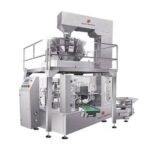Transcutaneous Electrical Nerve Stimulation (TENS) is a noninvasive method used to alleviate various types of pain, including sciatica. This therapy involves applying low-voltage electrical currents to the skin, which interact with nerve fibres to reduce pain sensations. TENS works through two primary mechanisms: the pain gate theory and endorphin release.
The TENS machine, a portable device for this therapy, consists of a small battery-operated unit connected to electrode pads. These pads are placed on the skin near the affected area or along specific nerve pathways. Users can adjust the intensity and frequency of the electrical pulses to suit their comfort level and achieve optimal pain relief.
As a physiotherapy machine, the TENS device has gained popularity for its ease of use and effectiveness in managing sciatica pain. The pain gate theory suggests that the electrical stimulation from TENS activates non-pain-carrying nerve fibres, which can block pain signals from reaching the brain. Additionally, TENS is believed to stimulate the production of endorphins, the body’s natural pain-relieving hormones, further contributing to pain management.
When used for sciatica, TENS can help reduce pain intensity, improve mobility, and decrease reliance on pain medications. However, whilst TENS can provide significant relief for many individuals, its effectiveness may vary.
Setting Up Your TENS Unit
Setting up your TENS unit correctly is crucial for achieving optimal sciatica relief. Identify the primary pain points along your sciatic nerve, typically in the lower back, buttocks, and leg. Place the electrodes strategically around these areas, ensuring they’re not directly on the spine or any bony prominences.
For sciatica, a lower frequency setting between 2-10 Hz is often recommended, as it can help stimulate the release of endorphins for pain relief. Start with a low intensity and gradually increase it until you feel a firm but comfortable tingling sensation. Remember, the goal is to mask the pain, not cause discomfort.
Treatment duration can vary, but sessions typically last 15-30 minutes. Some TENS units offer pre-programmed settings for sciatica, which can be a helpful starting point. However, adjust the settings to find the best for your pain profile.
Advantages of Using TENS
Transcutaneous Electrical Nerve Stimulation (TENS) has emerged as a valuable device in managing sciatica pain, offering several advantages to those seeking relief.
- As a non-invasive treatment, TENS provides a safe alternative to more aggressive interventions, empowering patients to manage their symptoms without needing surgery or injections.
- One of the primary benefits of TENS is its ability to deliver drug-free pain relief. This makes it an attractive option for individuals who wish to avoid medication side effects or those who cannot take certain painkillers due to other health conditions.
- Another significant advantage of TENS devices is their portability. Many units are compact and battery-operated, offering users the convenience of receiving therapy at home, at work, or on the go. This flexibility allows consistent pain management throughout the day, relieving the burden of constant pain and adapting to the user’s lifestyle and needs.
- TENS therapy also offers customizable settings, allowing users to adjust the intensity, frequency, and duration of the electrical pulses. This adaptability ensures that the treatment can be tailored to individual preferences and pain levels, maximizing its effectiveness for each user.
- Cost of TENS Therapy TENS presents a cost-effective solution for long-term pain management. After the initial investment in a device, ongoing costs are minimal, typically limited to replacement electrodes and batteries. This makes TENS an economical choice compared to recurring expenses associated with medications or frequent medical appointments.
Evaluating the Effectiveness of TENS for Sciatica
When evaluating the effectiveness of Transcutaneous Electrical Nerve Stimulation (TENS) for sciatica, multiple factors must be considered. Clinical studies have shown mixed results, with some patients experiencing significant pain relief while others report minimal improvement. Patient testimonials often highlight short-term benefits, such as reduced discomfort and increased mobility, but long-term benefits require further investigation.
Comparing TENS with other treatments reveals that it’s generally less invasive and has no side effects than pharmaceutical interventions.
Researchers continue to explore the optimal parameters for TENS application in sciatica treatment, including frequency, intensity, and duration of sessions. As with many pain management strategies, TENS may be most beneficial as part of a comprehensive treatment plan tailored to the individual’s needs and symptoms.
When to Consult a Healthcare Professional
When experiencing health concerns, knowing when to seek professional medical advice is crucial.
Severe pain that doesn’t subside with over-the-counter remedies or persists for an extended period should prompt a visit to your doctor. Even if they seem minor, persistent symptoms could indicate underlying conditions requiring expert evaluation.
Healthcare professionals are best equipped to diagnose complex issues and recommend appropriate treatments. They can also provide valuable insights into alternative therapies that suit your situation. It’s essential to consult a doctor if you’re considering stopping or changing any prescribed medications.
Remember, early intervention often leads to better health outcomes. If you’re unsure about the severity of your symptoms or have concerns about your overall health, it’s always better to err on the side of caution and seek medical advice. Your healthcare provider can offer reassurance, conduct necessary tests, and guide you toward the most effective treatment plan for your needs.






